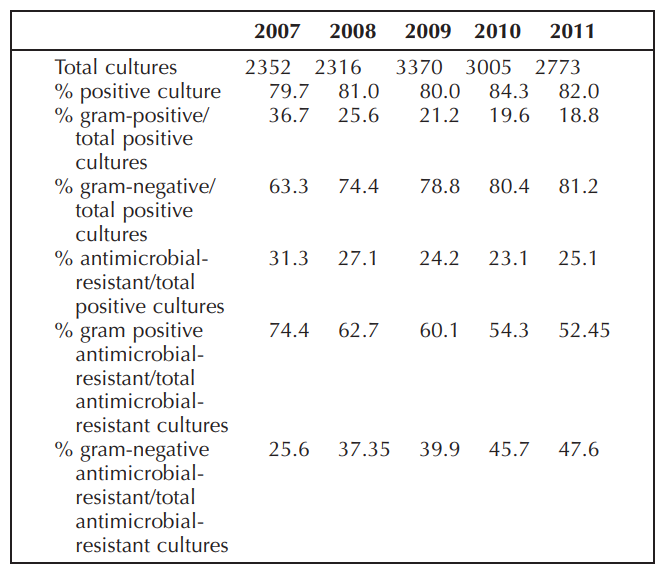Rita H. Khoury, MD; B. P. Salmon, MS; Prital Patel, BS; Asha Gandhi, BS; Peter Gudaitis, BA; Dauna Gudaitis, BA
(2012) Abstracts and Case Studies From the College of American Pathologists 2012 Annual Meeting (CAP ’12). Archives of Pathology & Laboratory Medicine: September 2012, Vol. 136, No. 9, pp. 1005-1162.
Context: Respiratory tract infections are one of the most frequent and fatal infections in the geriatric population. It is very common to prescribe antibiotics to treat this type of infection even if the cause was viral, which has led to the emergence of antimicrobial-resistant pathogens. Antimicrobial-resistant gram-negative bacteria are becoming a greater threat for the resident in long-term care facilities because they are associated with a higher mortality rate and longer hospital stays, which means a higher cost compared to drug-susceptible gram-negative bacteria.
Design: Data were collected from 13 816 expectorant or induced samples from patients residing in long-term care facilities with suspected respiratory tract infection from 2007 to 2011. Specimens quality was evaluated by Gram stain; acceptable specimens were incubated and if any significant organisms were present the identification and appropriate susceptibility test were performed utilizing MicroScan Walkaway 96 conventional panels.
Results: Although statistically, there was no difference in the percentage positive cultures over a 5-year period, a decrease in gram-positive antimicrobial-resistant bacteria and an increase in gram-negative antimicrobial-resistant bacteria from 2007 to 2011 were noted.

Conclusion: Antimicrobial-resistant infections are more prevalent now than only a few years ago. The overuse or misuse of antimicrobial agents and problems with infection control practices are the major factors in the development of drug resistance in organisms, as well as colonization and infection by antimicrobial-resistant organisms. Physicians should use care prescribing antimicrobial agents, and effective infection control programs should be in place to identify the risk factors and limit the spread of these bacteria.


Leave A Comment
You must be logged in to post a comment.